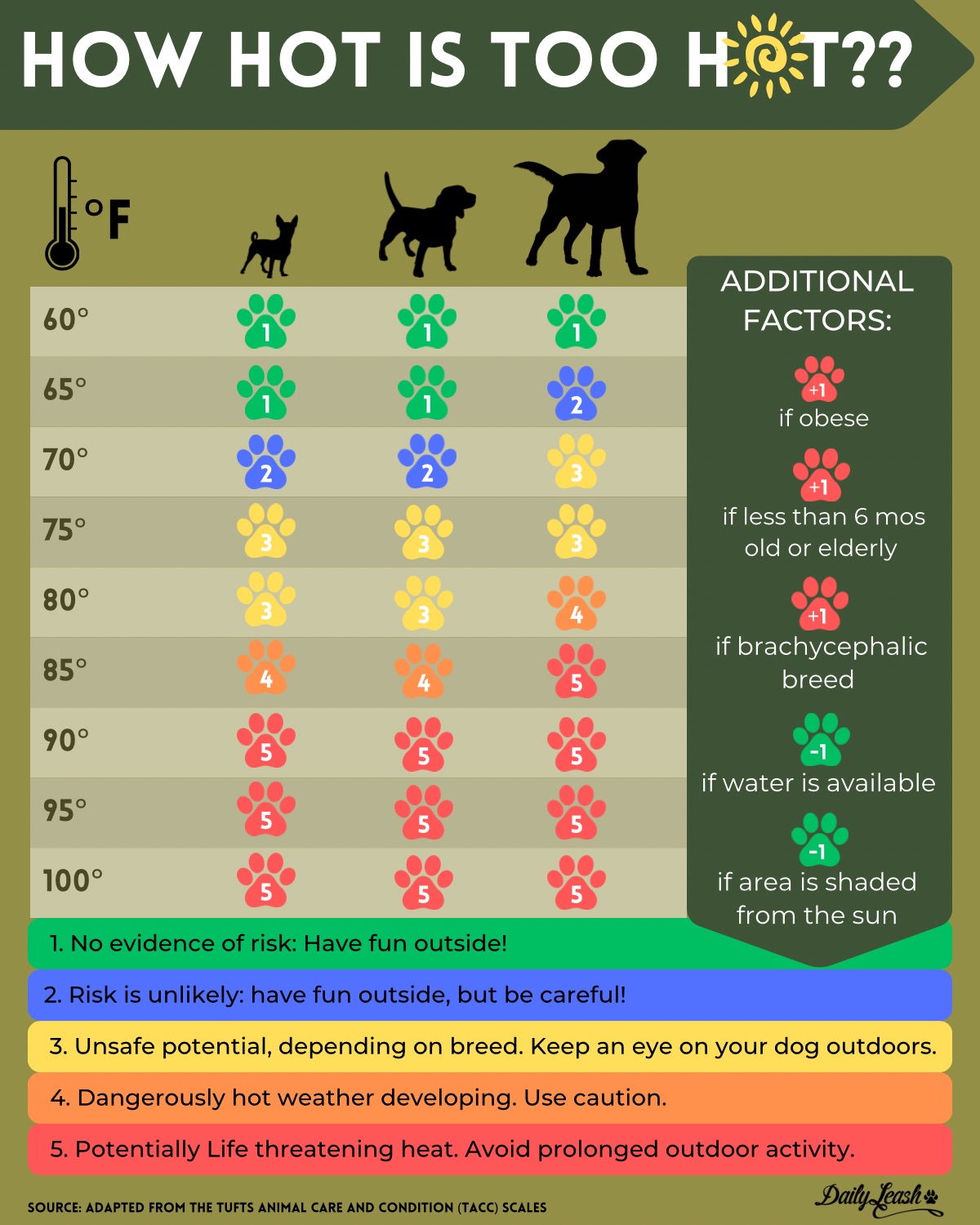Hot dog, summer’s nearly here! The warmer weather entices all of us to get out and enjoy our surroundings, and there’s no better partner for summer fun than your best four-legged friend. Our dogs love being with us and will happily tag along for any hike, boat ride, or errand, but soaring summer temperatures can make even a routine game of fetch in the backyard or a stroll around the neighborhood potentially deadly adventures for your pup. Daily Leash Dog Walking is kicking off the month of June with a four-part series, “Keeping Your Pet Cool Through the Dog Days of Summer.” From heatstroke due to outdoor activity or being left in a hot car to damaged footpads and the risk of sunburn and cancer, we’ll review what you can do to keep your pet cool and healthy through the warm weather months.
So, how hot is too hot for your dog to be outside? Our dogs don’t have nearly as many mechanisms for temperature regulation and cooling themselves as we do, making heatstroke a real risk as the heat and humidity rise. Overheating and heatstroke in dogs can occur much more quickly and at far cooler temperatures than many people imagine, and the results can be deadly.
Hyperthermia, often referred to as “heatstroke” or “heat exhaustion,” occurs when your pet’s temperature rises above healthy levels. Normal body temperature for dogs is between 101°F and 102.5°F; if a dog’s body temperature exceeds 103°F, it is considered abnormal or hyperthermic, according to VCA Animal Hospitals. As a dog’s temperature continues to rise, they are at grave risk for multiple organ failures and even death. Dogs who survive the condition are prone to greater health complications moving forward and may be at higher risk for future exposure to heatstroke.

Out of the gate, some dogs are more prone to overheating—those with thick and/or dark coats, brachycephalic breeds, overweight dogs, dogs with certain pre-existing medical conditions, and puppies and senior companions. Even though some dogs may be more susceptible, summer heat can prove perilous to any dog, regardless of breed, health, body composition, or age. The good news is that heatstroke, along with many other summer heat-related dangers, is easily preventable through awareness and action on the part of dog owners and caregivers.
Access to water and shade are essential to keeping your pet safe, as well as limiting time outside, avoiding strenuous exercise, and regularly monitoring your pup for signs of distress and fatigue. Excessive panting or drooling, increased thirst, lethargy, and changes in the color of a dog’s gums and tongue are early signs of overexposure to heat. If not attended to, these symptoms can quickly progress to vomiting, diarrhea, weakness, confusion, seizures, collapse, and even death. If you notice any of these symptoms in your dog, move them inside or to a cooler location, and contact your vet or an emergency veterinary service immediately. See the chart for an overview of the temperatures and factors that allow for safe outdoor activity for your dog. And stay tuned to future posts for more information about the dangers of heat for your pet and ways to keep them cool through the dog days of summer.

